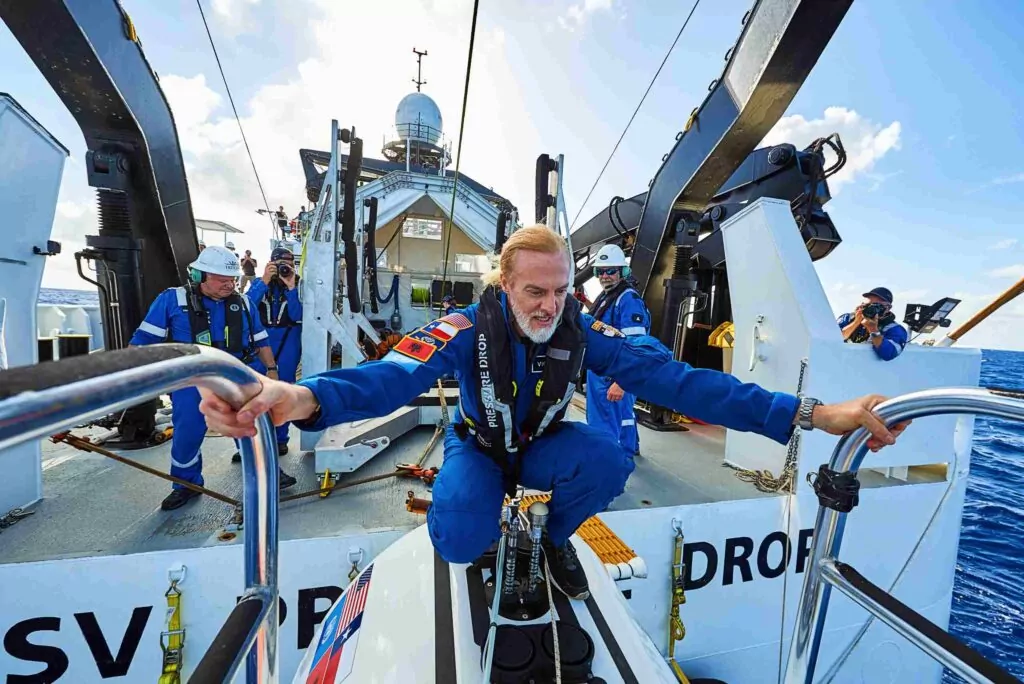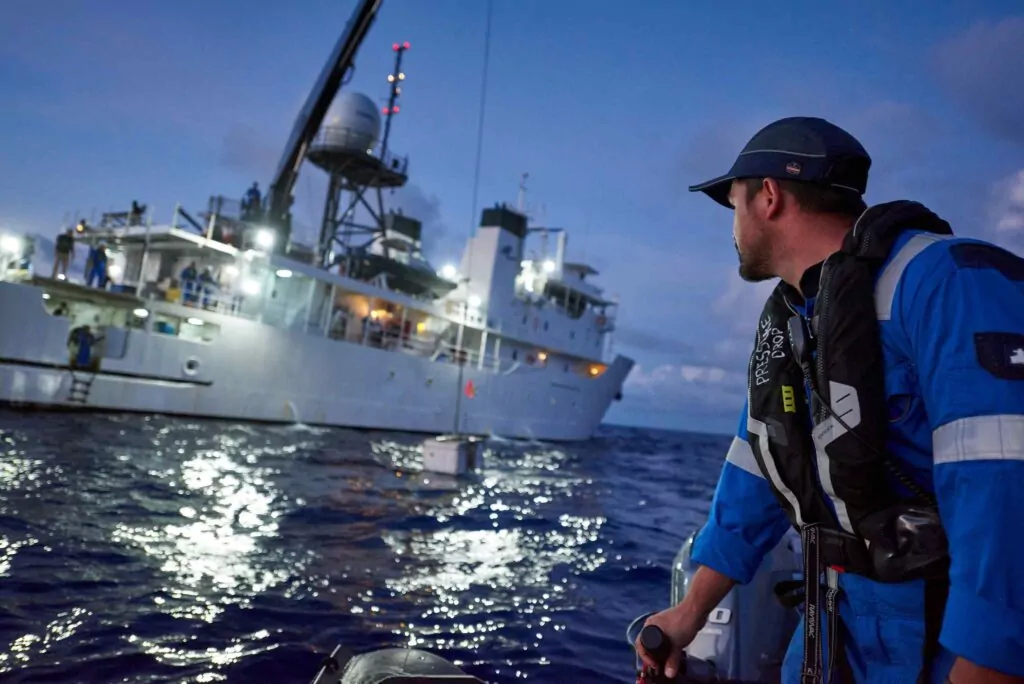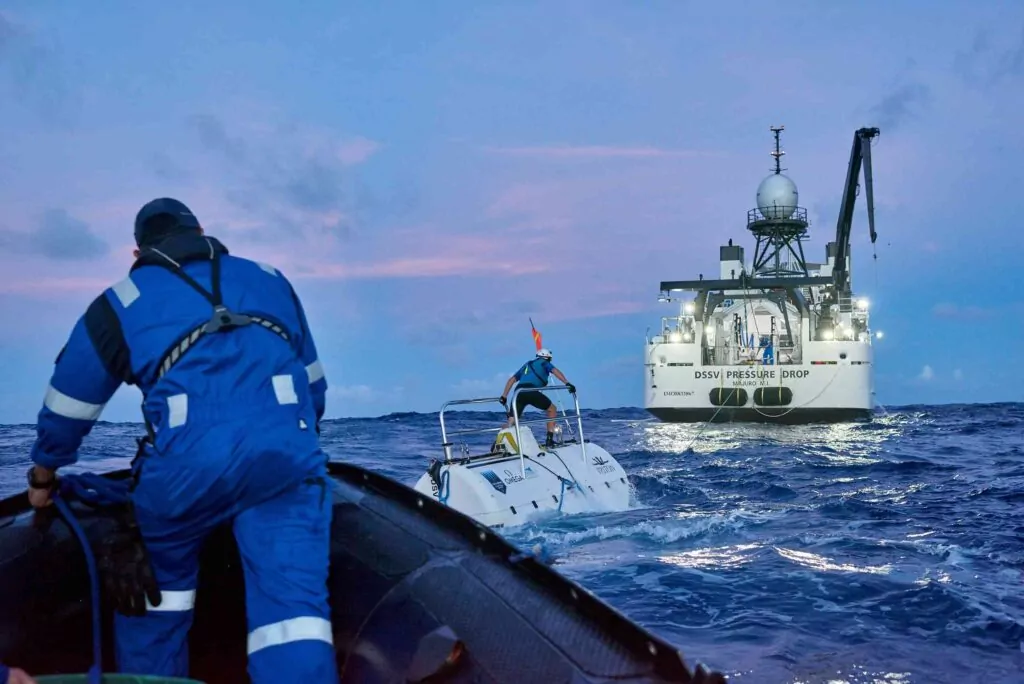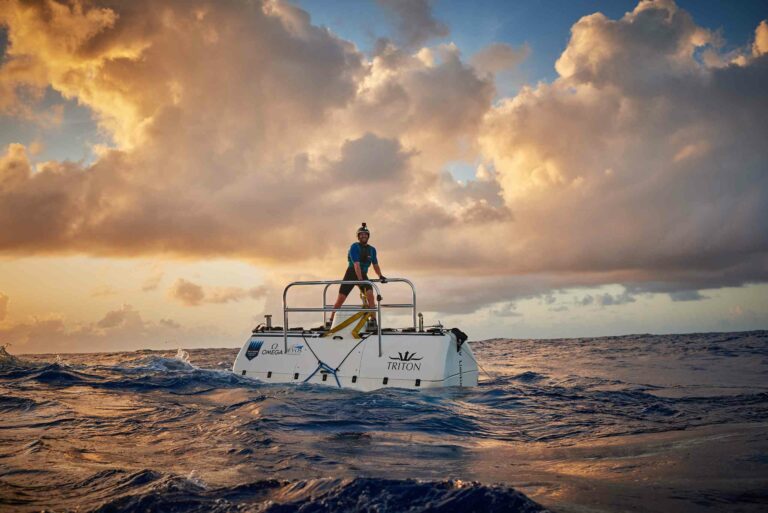Victor Vescovo, the world’s deepest-diving explorer, has decided to “take a bit of a break” – which means that after three years of trying he has finally found a buyer for his Hadal Exploration System (HES). It has been sold for an undisclosed sum to US billionaire Gabe Newell’s Inkfish ocean-exploration research organisation.
The deal includes hardware in the shape of Vescovo’s research ship Pressure Drop and his ultra-deep two-person submersible Limiting Factor, which the retired US Navy commander has piloted on multiple descents into the deepest unexplored parts of the ocean. Also included is the advanced Kongsberg EM124 multibeam echo-sounder and three robot landers.
Also read: Titan disaster: history shows deep-sea diving is far from risky

HES started life in September 2014 when Vescovo financed the rapid development by Triton Submarines of Limiting Factor. In 2017 his company Caladan Oceanic bought an ex-US Navy sub-hunter to convert into the mothership, and sea-trialled the entire system, including echo-sounder and landers, the following summer.
The first human descent to the absolute bottom of the Atlantic Ocean followed that December and Vescovo went on make the first solo dives in the deepest parts of the Southern, Indian and Arctic Oceans as well as the Tonga Trench. He also became the fourth person to reach the bottom of the Pacific at Challenger Deep in the Mariana Trench.
Vescovo piloted three of five descents, including the first solo dive, to the Titanic in 2019, the first for 15 years, and that September formally put HES up for sale. But with no immediate takers he embarked on a further 13 major international expeditions up to September this year.
He made the first human descents, often accompanied by a local representative, to 12 more deep marine trenches, most recently, as reported on Divernet, in Japan, an expedition that Inkfish funded.

During Vescovo’s almost continuous expeditions more than 4 million sq km of seabed have been mapped, 80-plus new seamounts and other undersea features named and potentially more than 40 new species identified.
Inkfish says it will now dedicate the HES system to a multi-year scientific mission to continue exploring the ocean depths. This will be led by Prof Alan Jamieson of the University of Western Australia, who was chief scientist on most of Vescovo’s expeditions, including the Five Deeps.
‘Part of my life’
Talking to Divernet this July, Vescovo said: “While I have some degree of means, I don’t have the personal capability to fund a ship and a submersible of this calibre constantly, indefinitely. I am hopeful that in the next six to 12 months I will find a potential buyer that could actually fund it in such a way that it can continue its scientific efforts.”
Asked if he would miss it, he answered: “Of course I would – it’s part of my life!”
Now he says: “After managing and personally diving the system for more than four years, I’ll be looking forward to taking a bit of a break and re-focusing on my private-equity and venture-capital investments, which allowed me to personally fund this entire set of expeditions in the first place. It’s been a very intense eight years building and operating the system from scratch.
“However, I remain very committed to deep-ocean technology development and am looking forward to funding and helping to develop systems that can be used to enhance deep-sea exploration in the future, based on my 40-plus hours of experience at full ocean depth.”

Vescovo has identified areas for development that include “virtual windows” for improved visibility; better manipulator systems; improved ultra-deep sonar and navigation systems; and refinements to full-ocean-depth ROVs and AUVs.
Outside the deep-sea environment, he hopes to “help push technology forward” in the fields of defence and space. He also recently joined the advisory board of genetics research company Colossal Biosciences which, with echoes of Jurassic Park, hopes to reintroduce extinct species such as the Tasmanian tiger and woolly mammoth.
Major frustration
Vescovo has also revealed the major frustration he won’t miss: “What has become the most difficult part of deep-ocean exploration is simply getting approvals from different countries’ bureaucracies to conduct even pro bono research.
“One wouldn’t think that that would be a problem, but there seems to be an instinctive bias to say ‘no’ to exploration in countries’ EEZs [Exclusive Economic Zones], and that results in some permits sometimes taking years to obtain.
“It is ridiculous that permits require so much time, across so many agencies, to get approved and it is one of the reasons I became a bit frustrated with continuing my explorations, which are extremely costly to cancel if and when permits are denied.”
Buying out Vescovo’s HES was always going to require deep pockets. Gabe Newell became a millionaire as lead developer of the Windows operating system, leaving after 13 years to found the video-game company Valve, which he still part-owns. Forbes has estimated his net worth at US $3.9 billion.
“What Mr Vescovo and his team have accomplished with the Hadal Exploration System is extraordinary,” says Newell. “It represents a truly unique tool to the marine-science community, and we hope to carry on its tradition of enabling critically important research into the deepest regions of the oceans.”
Also on Divernet: First Humans Dive Into Yap And Palau Deeps, Deep-Sea Mapper Can’t Get Much Deeper, Vescovo Dives World’s Deepest Shipwreck Sammy B

